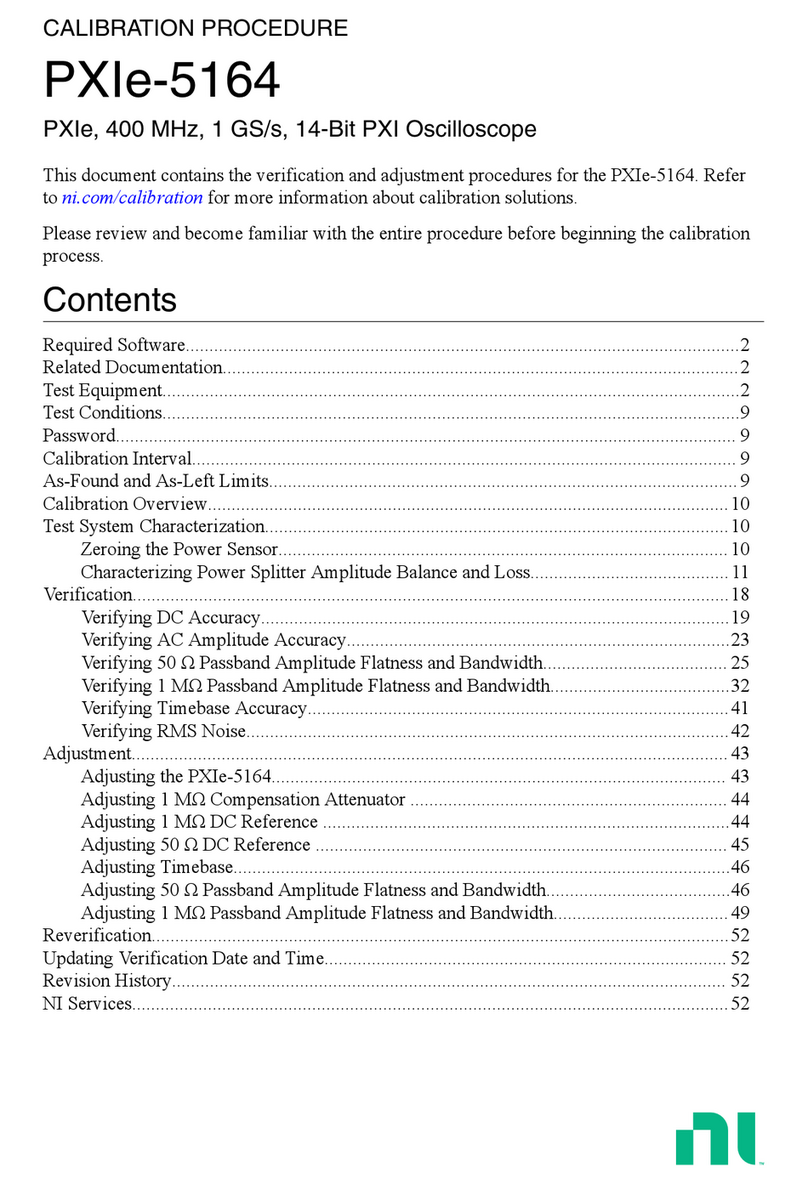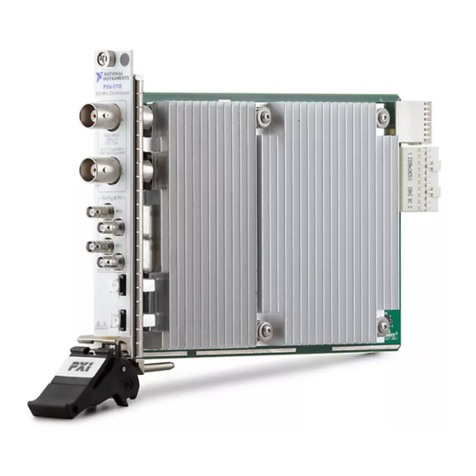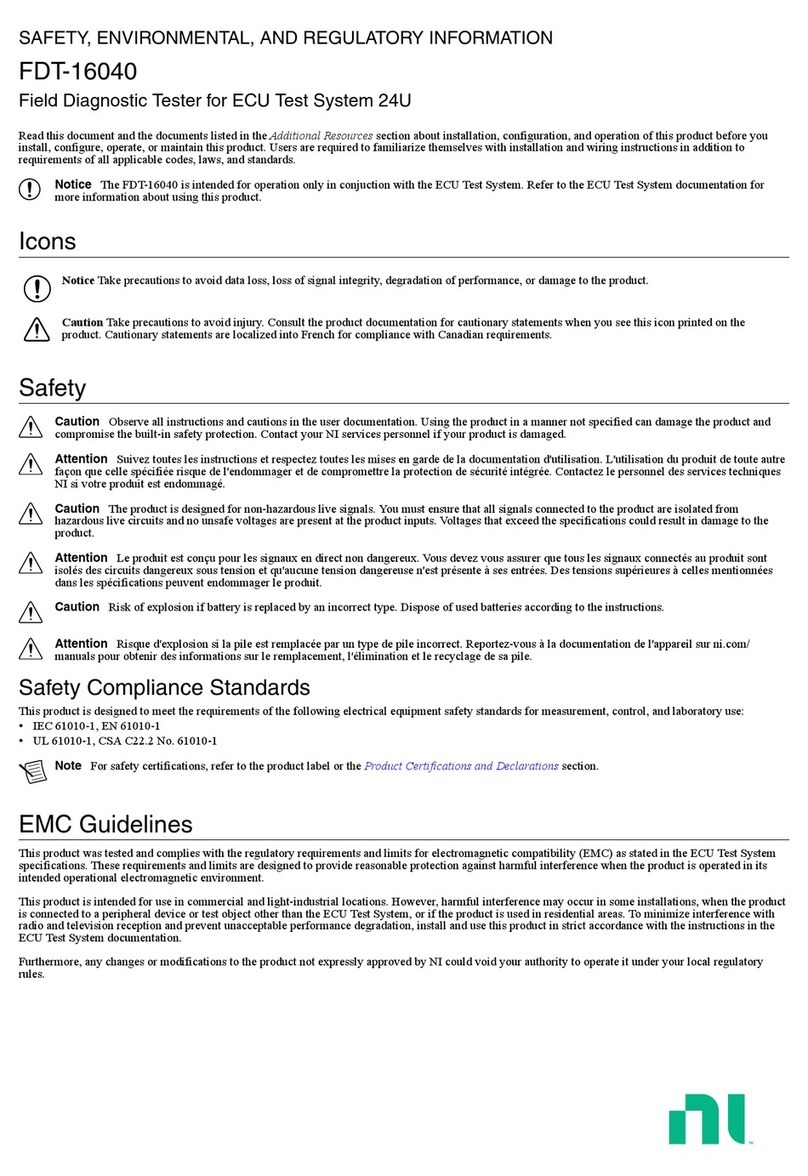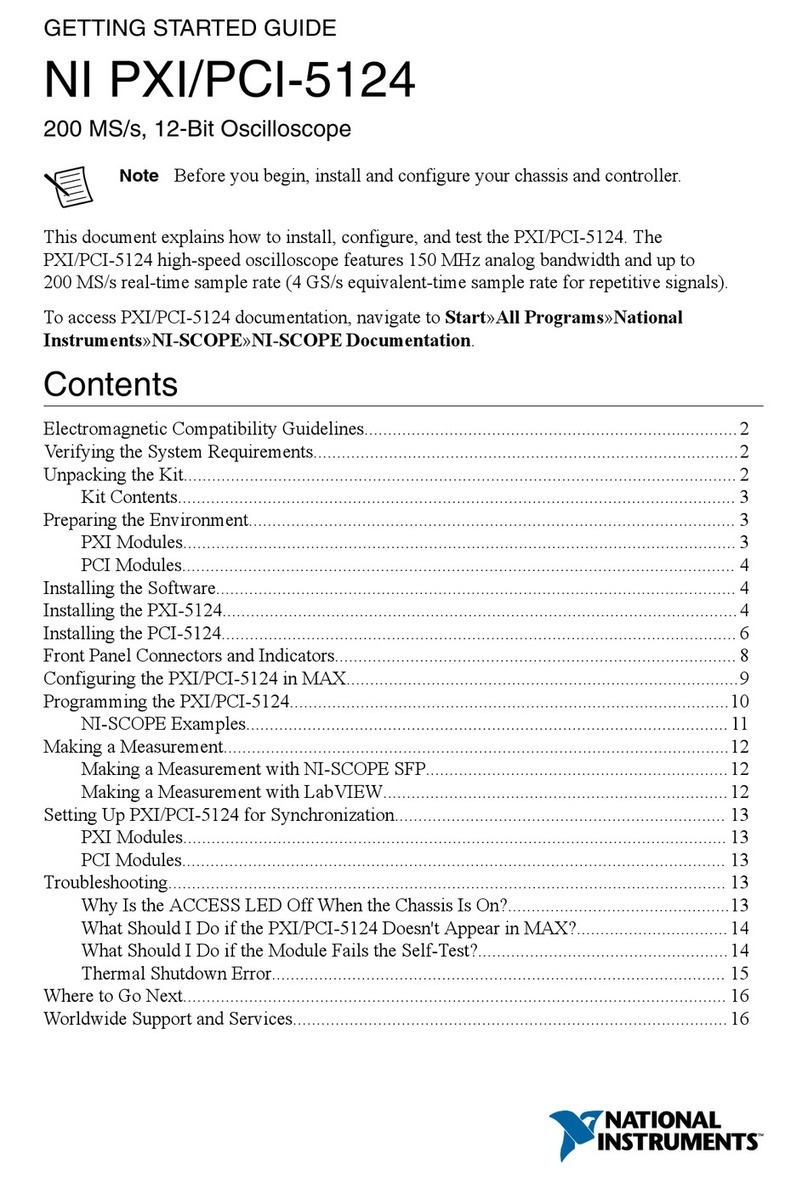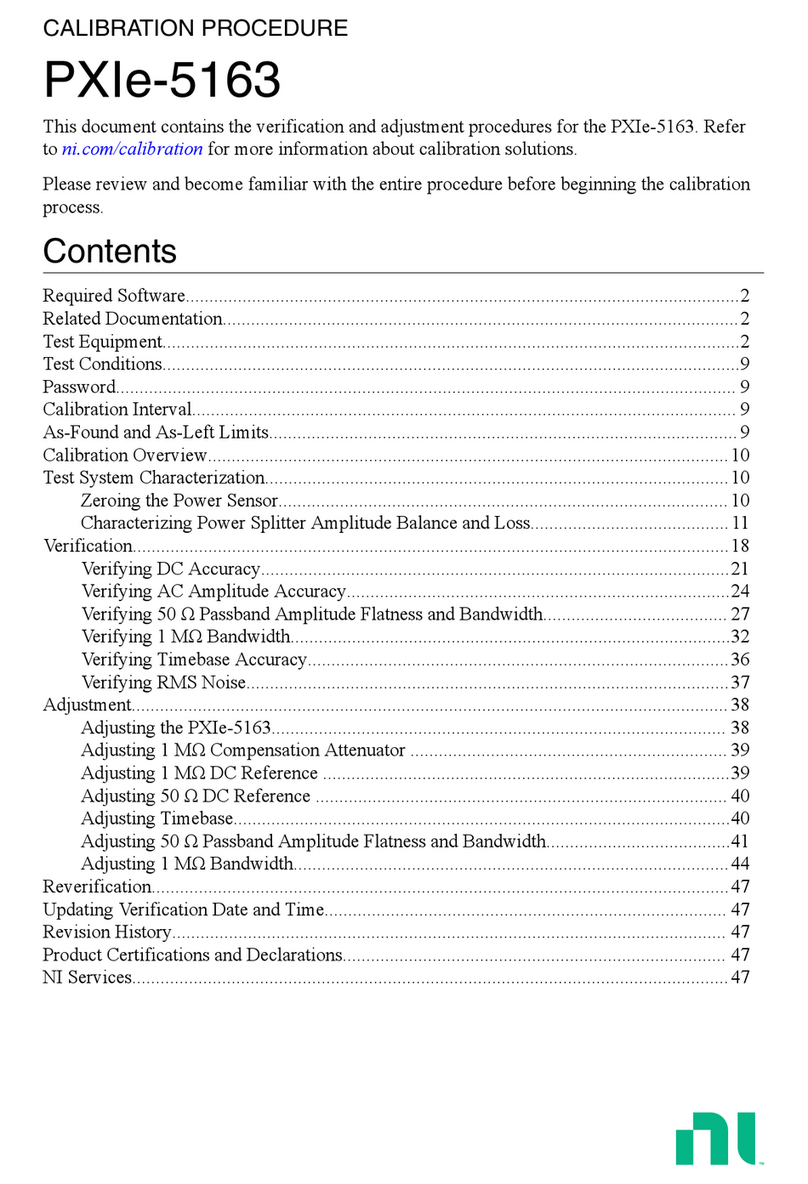
CALIBRATION PROCEDURE
NI PXIe-5170R
This document contains the verification and adjustment procedures for the NI PXIe-5170R
(NI 5170R). Refer to ni.com/calibration for more information about calibration solutions.
Contents
Required Software.....................................................................................................................1
Related Documentation.............................................................................................................2
Test Equipment..........................................................................................................................2
Test Conditions..........................................................................................................................5
Password................................................................................................................................... 6
Calibration Interval................................................................................................................... 6
As-Found and As-Left Limits................................................................................................... 6
Measurement Uncertainty......................................................................................................... 6
Calibration Overview................................................................................................................6
Test System Characterization....................................................................................................7
Zeroing the Power Sensor................................................................................................. 7
Characterizing Power Splitter Amplitude Imbalance....................................................... 7
Verification..............................................................................................................................10
Verifying Timebase Accuracy......................................................................................... 11
Verifying DC Accuracy...................................................................................................12
Verifying AC Amplitude Accuracy.................................................................................14
Verifying Flatness and Bandwidth.................................................................................. 18
Adjustment.............................................................................................................................. 21
Adjusting DC.................................................................................................................. 21
Adjusting Timebase.........................................................................................................22
Reverification..........................................................................................................................23
Updating Verification Date and Time..................................................................................... 23
Worldwide Support and Services............................................................................................ 23
Required Software
Calibrating the NI 5170R requires you to install the following software on the calibration
system:
• LabVIEW Instrument Design Libraries for Reconfigurable Oscilloscopes. The NI 5170R
was first supported in LabVIEW Instrument Design Libraries for Reconfigurable
Oscilloscopes 14.0.
You can download all required software from ni.com/downloads.












